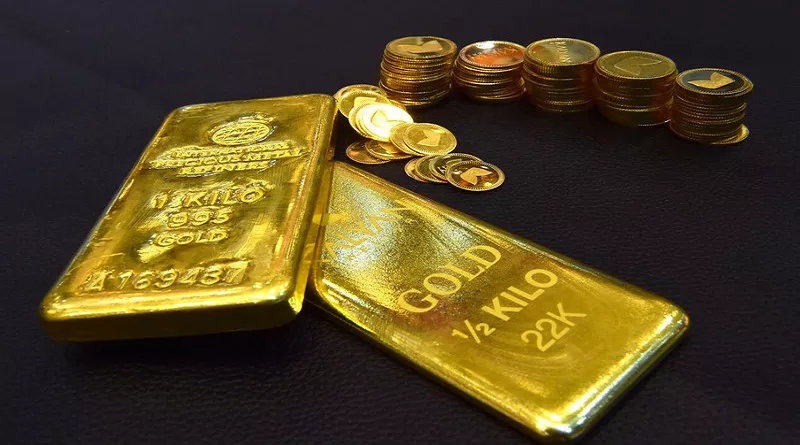Gold has been a symbol of wealth and prosperity for centuries, revered by civilizations throughout history. Its enduring allure and intrinsic value make it a popular choice for investors and collectors alike. But what exactly determines the worth of gold? In this article, we delve into the intricacies of gold pricing, exploring the factors that influence its value and shedding light on why just one gram of gold can command significant attention in the global market.
Historical Significance of Gold
Gold’s role as a store of value dates back thousands of years, with civilizations from ancient Egypt to Rome recognizing its worth. Its scarcity, durability, and lustrous appeal made it an ideal medium of exchange and a symbol of power and prestige. Throughout history, gold has retained its value, serving as a hedge against economic uncertainty and inflation.
The Market Dynamics of Gold
The value of gold is primarily driven by supply and demand dynamics, influenced by various factors including economic conditions, geopolitical tensions, and central bank policies.
Supply Factors
Gold is relatively scarce, with annual production averaging around 3,000 metric tons. The majority of gold is mined from underground operations or extracted as a byproduct of mining other metals such as copper and silver. Fluctuations in mining output, geopolitical disruptions, and technological advancements in mining techniques can impact the supply of gold in the market.
Environmental Considerations
The environmental impact of gold mining, including deforestation, habitat destruction, and water pollution, has prompted calls for sustainable mining practices. Responsible mining initiatives aim to minimize environmental harm and ensure the long-term viability of gold extraction.
Demand Factors
Gold’s appeal extends beyond its intrinsic value, with demand stemming from various sources including jewelry, investment, central bank reserves, and industrial applications.
Jewelry
The jewelry industry is a significant driver of gold demand, accounting for approximately 50% of annual consumption. Gold’s malleability, durability, and timeless appeal make it a popular choice for crafting intricate designs and adornments. Demand for gold jewelry is influenced by cultural preferences, economic prosperity, and changing fashion trends.
Investment
Investors view gold as a hedge against inflation, currency depreciation, and geopolitical uncertainty. Gold’s role as a safe-haven asset becomes particularly pronounced during times of economic turbulence or market volatility. Investment demand for gold takes various forms, including physical bullion, exchange-traded funds (ETFs), and gold futures contracts.
Central Bank Reserves
Central banks hold gold reserves as part of their foreign exchange reserves, providing stability and diversification to their portfolios. Gold reserves serve as a form of insurance against currency devaluation and geopolitical risks. Central bank purchases and sales of gold can impact market sentiment and prices.
Industrial Applications
Gold’s unique properties, including conductivity and corrosion resistance, make it indispensable in various industrial applications. From electronics and dentistry to aerospace and telecommunications, gold plays a vital role in modern technology. Industrial demand for gold is driven by technological advancements and emerging applications.
Price Determinants
The price of gold is quoted in troy ounces on international commodity exchanges such as the London Bullion Market Association (LBMA) and the Chicago Mercantile Exchange (CME). Several factors influence the price of gold, including:
Macroeconomic Indicators
Economic data such as GDP growth, inflation rates, and interest rates influence investor sentiment and market expectations. Weak economic indicators or signs of impending recession can drive demand for gold as a safe-haven asset.
Currency Movements
Gold prices are inversely correlated with the strength of the US dollar, as gold is priced in USD on international markets. A weaker dollar makes gold more affordable for foreign buyers, increasing demand and driving prices higher.
Geopolitical Events
Geopolitical tensions, conflicts, and geopolitical uncertainty can elevate demand for gold as investors seek refuge from market volatility and political instability. Crises such as wars, terrorist attacks, and diplomatic disputes can trigger a flight to safety, boosting gold prices.
Interest Rates
Changes in interest rates impact the opportunity cost of holding gold. When interest rates are low or negative, the opportunity cost of holding non-yielding assets like gold decreases, making it more attractive to investors.
Market Sentiment
Market sentiment, investor psychology, and speculative trading play a significant role in short-term price fluctuations. Sentiment indicators such as investor positioning, trading volumes, and technical analysis can influence market dynamics and price trends.
The Significance of One Gram of Gold
Despite its small size, just one gram of gold represents a tangible store of value and purchasing power. With gold prices typically quoted per troy ounce, the value of one gram of gold may seem negligible at first glance. However, its worth becomes apparent when considered in the context of historical price trends and global economic conditions.
Calculating the Value
To calculate the value of one gram of gold, it is necessary to convert the price per troy ounce into grams using the conversion factor of 1 troy ounce = 31.1035 grams. For example, if the price of gold is $1,800 per troy ounce, the value of one gram of gold would be approximately $57.82 (1,800 / 31.1035).
See Also How Much Is A Gold Half Sovereign Worth
Conclusion
Gold’s enduring appeal and intrinsic value make it a unique asset class with a rich history and global significance. Understanding the factors that influence gold pricing and the dynamics of supply and demand is essential for investors and collectors alike. While the value of one gram of gold may seem modest compared to larger denominations, its importance as a tangible store of wealth and symbol of prosperity should not be underestimated. As economic conditions evolve and geopolitical tensions fluctuate, gold remains a steadfast anchor in an uncertain world.


